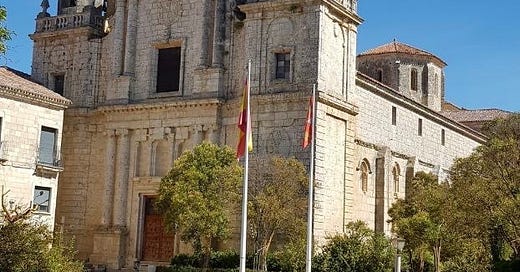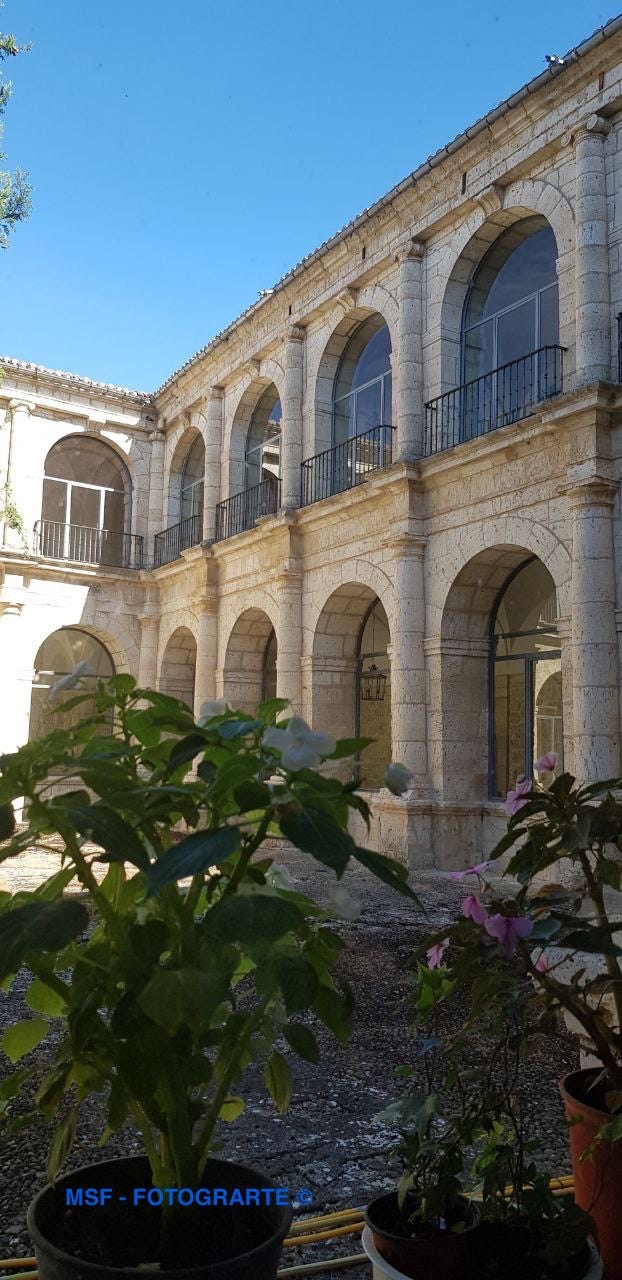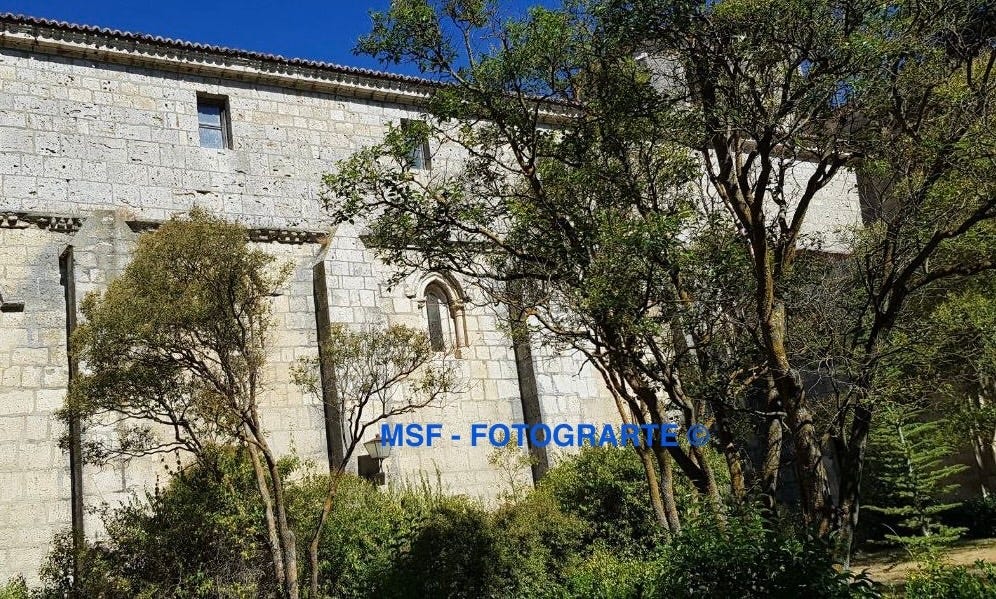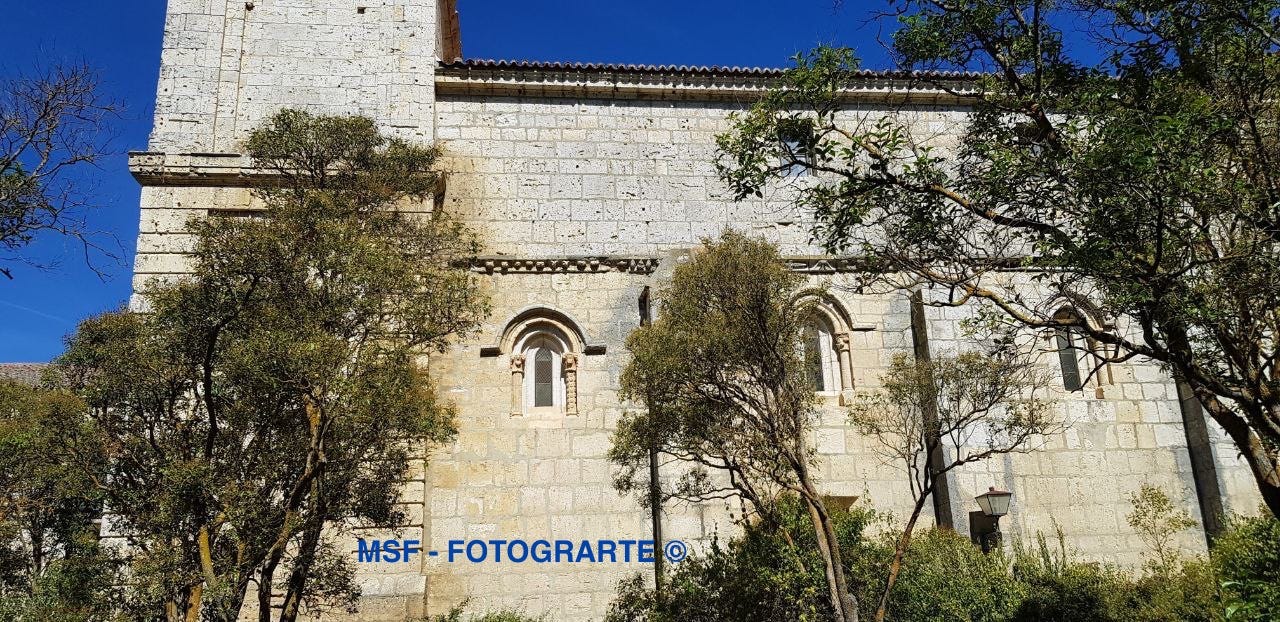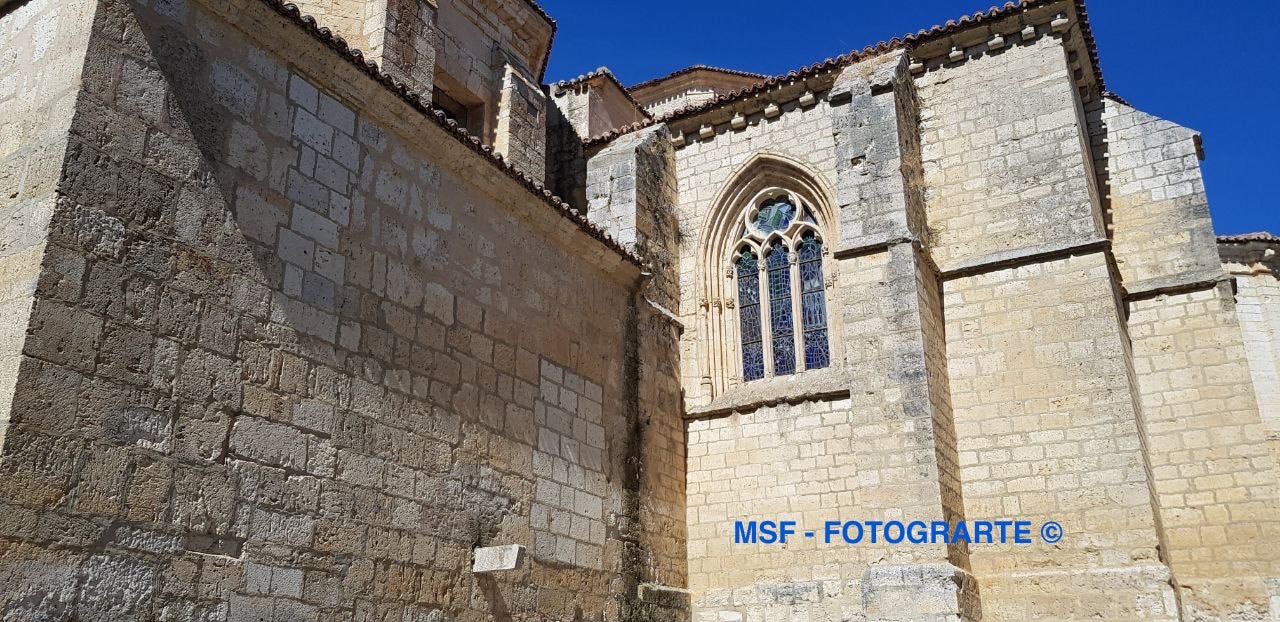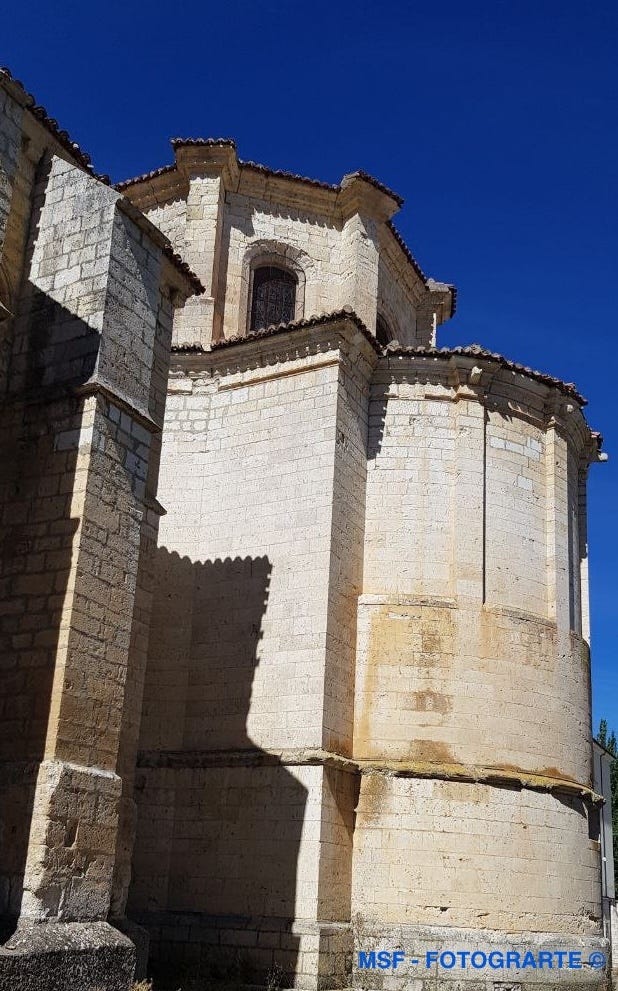Vista general / General View.
El Monasterio de La Santa Espina lo mandó construir doña Sancha de Castilla, hermana de Alfonso VII el Emperador, en el año 1147. Esta infanta obtuvo por mediación del Rey francés, Luis el Joven, una espina de la corona de nuestro Señor custodiada en el Monasterio de San Dionís, y que posteriormente regaló a este Monasterio, de ahí su nombre de Real Monasterio de Santa María de La Santa Espina. En el mismo año llegaron los primeros monjes cistercienses, enviados por San Bernardo, a cuyo frente, según cuenta la tradición, venía San Nivardo, su hermano.
Como ha pasado en tantos otros monasterios, éste se construyó en diferentes épocas y sufrió notables reformas.
From the official website:
The Monastery of La Santa Espina was ordered to be built by Doña Sancha of Castile, sister of Alfonso VII the Emperor, in 1147. This infanta obtained through the mediation of the French King, Louis the Younger, a thorn from the crown of Our Lord, which was kept in the Monastery of San Dionís, and which she later gave to this monastery as a gift, hence its name, the Royal Monastery of Santa María de La Santa Espina. In the same year, the first Cistercian monks arrived, sent by Saint Bernard, at whose head, according to tradition, came Saint Nivardo, his brother.
Like so many other monasteries, this one was built at different times and underwent significant alterations.
Al monasterio se accede por un arco de triunfo del s. XVI (foto de arriba). Muy cerca se encuentra un monolito que recuerda el encuentro de Felipe II con D. Juan de Austria “Jeromín”, acontecimiento acaecido el día 28 de septiembre de 1559, en este lugar. Del siglo XVI es también la fachada de la hospedería, en la que resaltan los escudos del Abad y de Alfonso VII.
The monastery is accessed through a triumphal arch from the 16th century (photo above). Nearby is a monolith that commemorates the meeting between Philip II and D. Juan de Austria ‘Jeromín’, an event that took place on 28th September 1559, in this place. The façade of the hostelry also dates from the 16th century, with the coats of arms of the Abbot and Alfonso VII.
La fachada de la iglesia y sus dos torres son de mediados del s. XVIII, de la Escuela de Ventura Rodríguez1.
The façade of the church and its two towers date from the mid-18th century, from the Ventura Rodríguez2 School.
Ya en el interior, resaltan los dos claustros, el claustro de la hospedería y el claustro regular, ambos del s. XVII. En la pared del claustro regular sobresalen unos lucillos que en su día sirvieron de enterramiento y abundantes marcas de cantero.
Inside, the two cloisters, the hospice cloister and the regular cloister, both dating from the 17th century, stand out. On the wall of the regular cloister there are some small lights that once served as burial places and abundant stonemason's marks.
Una parte de la fachada exterior con algunas de las ventanas más antiguas del complejo / Part of the exterior façade with some of the oldest windows in the complex.
La misma fachada pero vista con la torre de la fachada que vimos en la primera foto a la izquierda / The same façade but seen with the façade tower that we saw in the first photo on the left.
Otra parte de la fachada con una ventana de estilo gótico / Another part of the façade with a Gothic-style window.
Otra vista de la fachada: en este caso vemos la cabecera de la iglesia con uno de sus ábsides y la bóveda del crucero de la iglesia.
Otra vista de la fachada. / Another view of the façade.
El Monasterio ha sobrevivido a los momentos de adversidad: el incendio de 1731 que destruyó la biblioteca y gran parte del edificio, y del que pudieron salvarse la reliquia de La Santa Espina y el libro de Tumbo. La invasión francesa, y la desamortización de Mendizábal, que ocasionó la salida definitiva de los monjes en el año 1835.
En 1865 adquirió el monasterio D. Ángel Juan Álvarez, Marqués de Valderas. Gracias a la iniciativa de su viuda, Doña Susana de Montes y Bayón, el Monasterio pasó a ser un centro de enseñanza agrícola.
Este Monasterio está declarado Bien de Interés Cultural desde el año 1931.
The Monastery has survived moments of adversity: the fire of 1731 that destroyed the library and a large part of the building, from which the relic of La Santa Espina and the book of Tumbo were saved. The French invasion and the disentailment of Mendizábal led to the definitive departure of the monks in 1835.
In 1865 the monastery was acquired by Ángel Juan Álvarez, Marquis of Valderas. Thanks to the initiative of his widow, Doña Susana de Montes y Bayón, the monastery became a centre for agricultural education.
This monastery was declared an Asset of Cultural Interest since 1931.
Esta entrada fue originalmente publicada en Wordpress.
Pone del siglo XVII en la página pero siendo Ventura Rodríguez del siglo XVIII, es un poco difícil que su escuela sea anterior.
Famed architect and sculptor of the 18th-century, representative of the Classicism in Spanish art.

